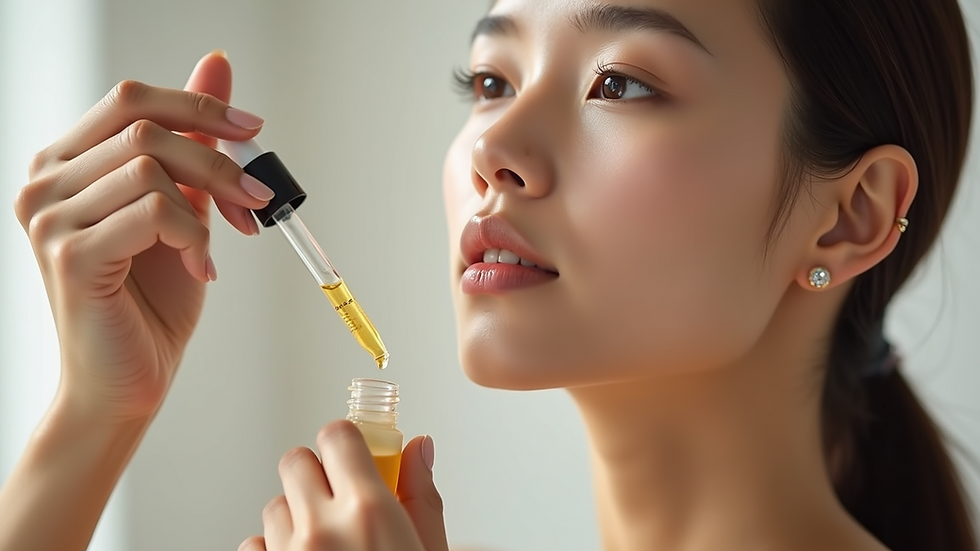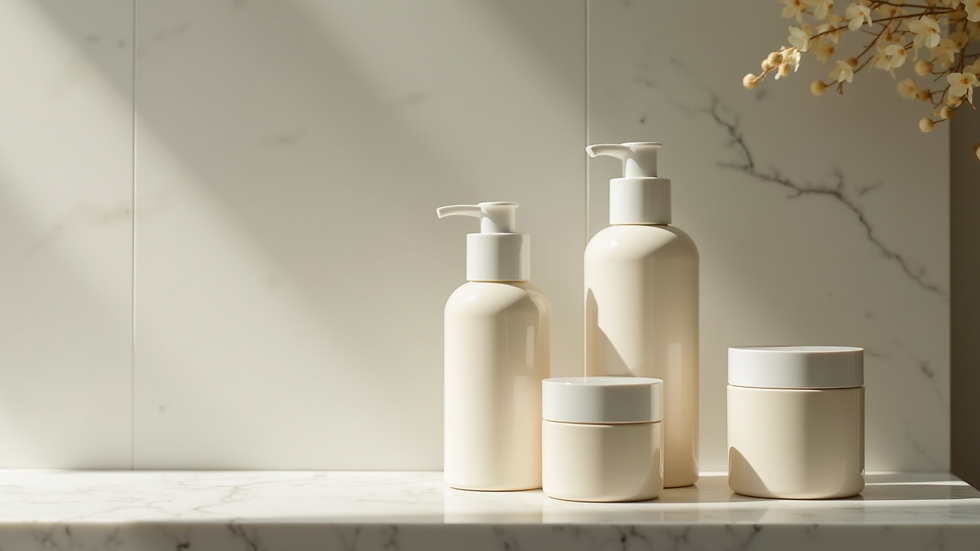A Comprehensive Guide to Hydrating Serums
- Revision Skin Care

- Aug 25
- 4 min read
When it comes to skincare, hydration is the foundation of a healthy, glowing complexion. In Singapore’s humid yet often air-conditioned environment, maintaining optimal skin moisture can be surprisingly challenging. That’s where hydrating serums come in. These lightweight, potent formulations deliver concentrated moisture and active ingredients deep into the skin, helping to restore balance and resilience. In this guide, I’ll walk you through everything you need to know about hydrating serums—from their science-backed benefits to how to choose the right one for your skin type and climate.
Understanding Hydrating Serums: What Makes Them Special?
Hydrating serums are designed to penetrate deeper than traditional moisturizers. Unlike creams that primarily sit on the skin’s surface, serums contain smaller molecules that can reach the lower layers of the epidermis. This allows them to deliver hydration and active ingredients more effectively.
The key to their hydrating power lies in ingredients like hyaluronic acid, glycerin, and sodium PCA. These are humectants, meaning they attract water from the environment and bind it to the skin. Hyaluronic acid, for example, can hold up to 1,000 times its weight in water, making it a superstar for skin hydration.
In Singapore’s tropical climate, where humidity fluctuates and air conditioning can dry out your skin, hydrating serums help maintain moisture levels without feeling heavy or greasy. They also prepare your skin to better absorb subsequent products like moisturizers or sunscreens.
Clinical studies have shown that regular use of hydrating serums improves skin elasticity, reduces fine lines, and enhances the skin barrier function. This means your skin not only looks plumper but is also better protected against environmental stressors.

Hydrating serums deliver moisture deep into the skin for lasting hydration.
How to Choose the Right Hydrating Serum for Your Skin
Selecting the perfect hydrating serum can feel overwhelming given the variety of options available. Here are some practical tips to help you make an informed choice:
Identify Your Skin Type
Oily or acne-prone skin: Look for lightweight, non-comedogenic serums with ingredients like hyaluronic acid and niacinamide. These hydrate without clogging pores.
Dry or sensitive skin: Choose serums with soothing ingredients such as ceramides, aloe vera, and squalane to calm and deeply moisturize.
Combination skin: Opt for a balanced formula that hydrates dry areas without making oily zones greasy.
Check the Ingredient List
Prioritize serums with proven humectants (hyaluronic acid, glycerin).
Avoid heavy oils or alcohols that can irritate or dry out the skin.
Consider antioxidants like vitamin C or E for added protection against pollution.
Consider Your Climate
In Singapore’s humid weather, a gel-based or water-based serum absorbs quickly and feels refreshing.
If you spend a lot of time in air-conditioned spaces, a serum with occlusive ingredients can help lock in moisture.
Patch Test Before Full Use
Always test a new serum on a small skin area to check for sensitivity or allergic reactions.
Using a hydrating serum consistently, especially in the morning and evening, can transform your skin’s texture and appearance over time.

Choosing the right hydrating serum depends on your skin type and environment.
What is the Most Hydrating Face Cream?
While serums are excellent for delivering moisture deep into the skin, pairing them with a quality hydrating face cream can maximize hydration and lock in all the benefits. The best hydrating face creams complement serums by providing a protective barrier that prevents water loss.
In Singapore’s climate, a hydrating face cream should be:
Lightweight yet nourishing: Avoid heavy creams that can feel sticky in humid weather.
Non-comedogenic: To prevent breakouts, especially if you have oily or combination skin.
Rich in ceramides and fatty acids: These help repair the skin barrier and retain moisture.
Infused with antioxidants: To combat free radicals from sun exposure and pollution.
Some creams also include ingredients like niacinamide and peptides, which support skin repair and improve texture. When combined with a hydrating serum, this duo can provide all-day moisture and a radiant complexion.
If you want to explore effective options, I recommend checking out trusted brands that formulate products specifically for tropical climates. This ensures your skin stays hydrated without feeling weighed down.

Hydrating face creams lock in moisture and protect the skin barrier.
How to Incorporate Hydrating Serums into Your Skincare Routine
To get the most out of your hydrating serum, it’s important to apply it correctly and at the right time. Here’s a simple step-by-step guide:
Cleanse Your Skin
Start with a gentle cleanser to remove dirt, oil, and impurities. This prepares your skin to absorb the serum effectively.
Apply Toner (Optional)
If you use a toner, apply it before the serum. Toners can help balance your skin’s pH and add a light layer of hydration.
Use the Hydrating Serum
Dispense 2-3 drops of serum onto your fingertips. Gently press and pat it into your face and neck. Avoid rubbing, which can irritate the skin.
Follow with Moisturizer
Seal in the serum’s benefits with a hydrating face cream or moisturizer. This step is crucial to prevent moisture loss.
Don’t Forget Sunscreen (Daytime)
Always finish your morning routine with a broad-spectrum sunscreen to protect your skin from UV damage.
For best results, use your hydrating serum twice daily. Over time, you’ll notice improved skin texture, reduced dryness, and a natural glow.
Why Hydrating Serums Are Essential for Singapore’s Climate
Singapore’s tropical climate presents unique challenges for skin hydration. The high humidity can cause excess oil production, while constant exposure to air conditioning dries out the skin. This combination often leads to dehydration, where the skin lacks water despite feeling oily.
Hydrating serums are essential because they:
Restore moisture balance without adding heaviness.
Strengthen the skin barrier, making it more resilient to environmental stressors like pollution and UV rays.
Improve skin texture and elasticity, reducing the appearance of fine lines caused by dryness.
Enhance the effectiveness of other skincare products by prepping the skin.
Clinical research supports the use of hydrating serums in humid climates, showing that they help maintain skin hydration levels throughout the day. This is especially important for those who want to maintain a fresh, dewy complexion without the discomfort of sticky or greasy products.
If you’re looking to upgrade your skincare routine, incorporating a hydrating serum tailored for Singapore’s environment is a smart and effective choice.
I hope this guide has helped you understand the science and benefits behind hydrating serums. If you’re ready to experience the difference, consider exploring trusted products designed for optimal hydration in tropical climates. Your skin will thank you with a radiant, healthy glow every day.




Comments